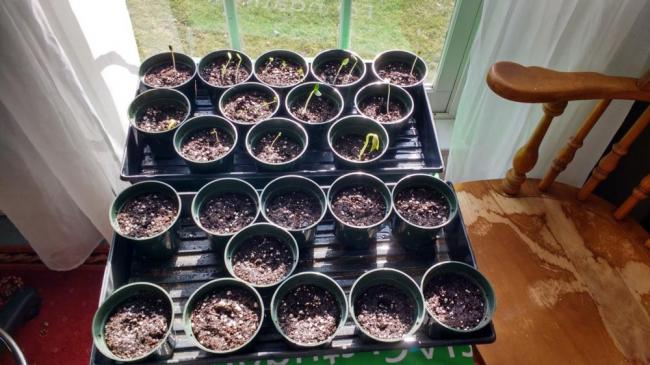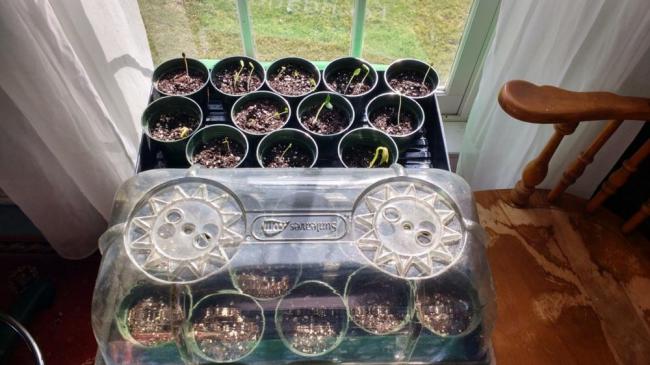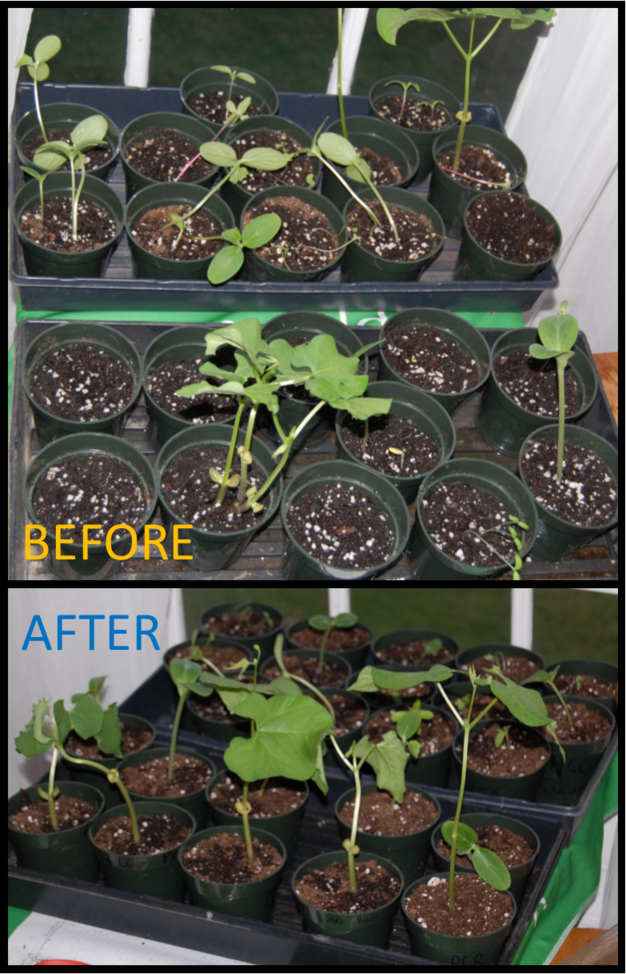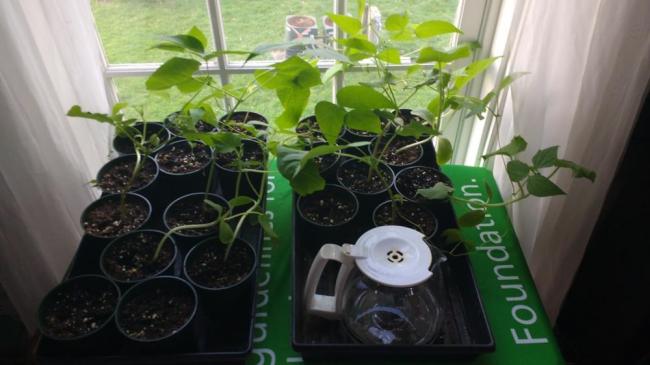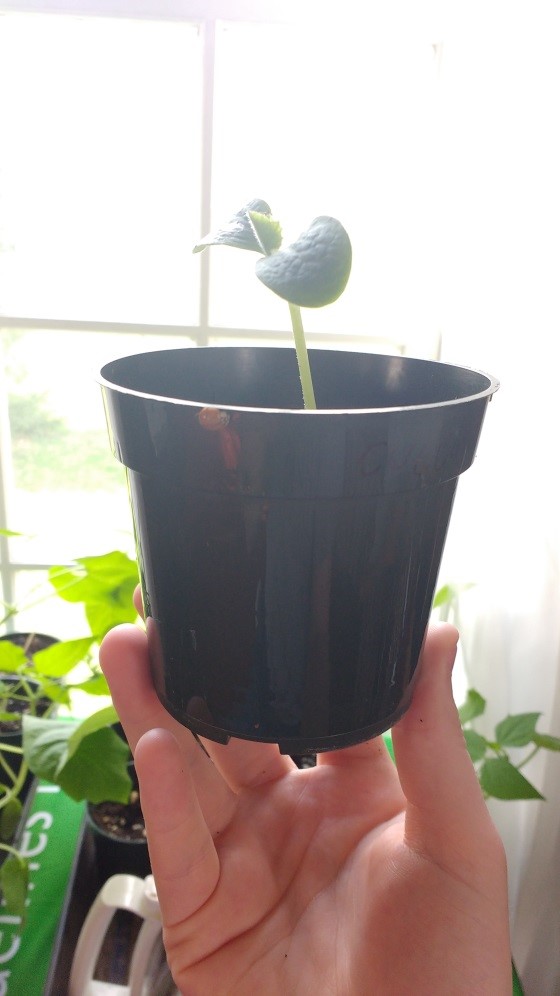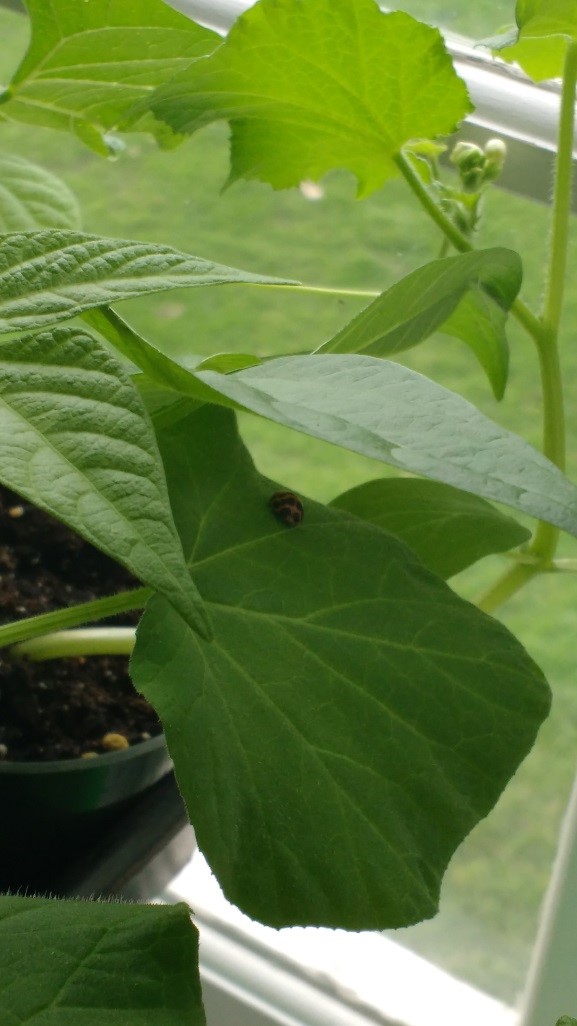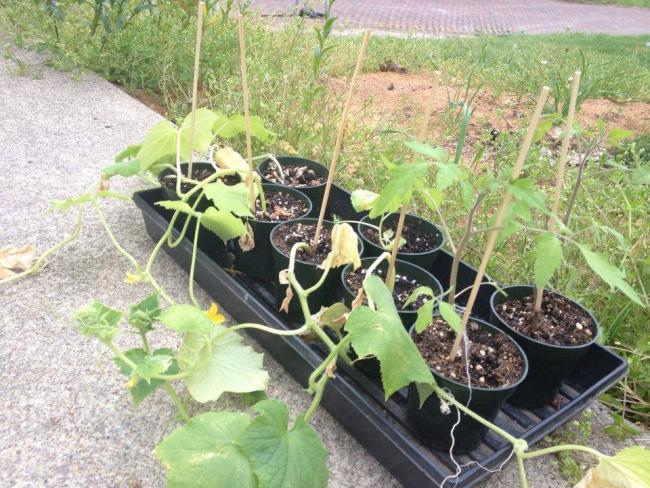Sustainable Living Tips
Residents of the OHIO Ecohouse engage in in-depth conversations each week regarding their own interests in sustaining personal, communal and environmental health. Below are some of the basic behaviors residents adopt while living in the house (and, hopefully, continue to promote after their experience).
Reduce
Conserve Energy:
Reducing your dependence on fossil fuels can seem like a difficult task. While investing in alternative energy in our homes may be the first solution many people think of, we can also reduce our use of fossil fuels by making simple changes in our daily actions.
- Turn off lights and unplug appliance when not in use
- Use natural lighting whenever possible
- If you have a difficult time remembering to power down devices at the end of a day, consider placing them on a timer or setting them up on a smart strip device.
- Limit your technology upgrades. By reducing the number of devices (such as computers, phones and ipads) that we own or upgrade each year, we can significantly reduce our personal demand of fossil fuels for the production, use and disposal of these products.
- When shopping for new appliances for your home, compare the energy consumption of each device and include the cost of energy in your decision.
Conserve Water:
Water is a finite resource and should be conserved for the health of our environment and society. Here are a few quick tips for conserving water in the home:
- Install low flow shower heads
- Limit your shower length to no more than 3-5 minutes daily
- Place a brick or 2 liter soda container into your toilet tank to reduce the amount of water utilized per flush
- Use rain water for watering your plants
- If you wash your dishes throughout the day, fill one bin with soapy dish water and use all day rather than filling the sink multiple times for just a few dishes.
Reduce Food Waste
While Ohio University has the largest in-vessel composting facility in the nation, the goal should be to reduce the amount of food waste initially generated. Here are some tips for improving your food consumption efficiency:
- When eating at the dining hall, don't take more than you can eat. A good way to do that is to refrain from using a tray. Fill up only enough to fill one plate or however much you can actually eat.
- When grocery shopping, make a list of the items you do need before you go. Without a list in front of you, you may buy things you already have. Additionally, shopping on an empty stomach leads to excess purchases that you may not be able to eat in time.
- According to the EPA, 21% of all waste in the landfill is food waste, so limit the amount of food that goes bad by eating what you have first before buying more.
- Plan your meals ahead of time based on what you already have. If you have some fresh vegetables in the refrigerator that are on the verge of expiring, plan to make pasta for dinner instead of heating up frozen food that will last longer or even going out to eat.
Natural Cleaning:
Store-bought cleaners typically contain dangerous chemicals, contribute to greenhouse gas emissions and are packaged in petroleum-based products. Avoid bringing those dangerous fumes and environmental harms into your home by making your own low-impact cleaners. A simple solution of warm water, lemon juice and vinegar can clean almost any surface. For additional cleaning properties, add essential oils or baking soda to your cleaner.
Reuse
Limit the amount of waste you send to the landfill by reusing products whenever possible. Here are a few easy ideas:
- Bring your own bags with you when you shop
- Invest in a single reusable travel mug and fill with your favorite beverages rather than using a disposable cup
- Wash and reuse plastic storage bags or containers whenever possible
- If you no longer want salvageable items (such as furniture, clothing, housewares, jewelry, etc.), give them the opportunity to lengthen their life by donating them to a locally owned thrift store.
Use Grey Water:
Collect rain water or used water from chores such as dish washing or from the waste tray of your dehumidifier to help facilitate other household needs such as flushing the toilet and watering the flowerbeds. Place a rain barrel under your home's gutters to collect rainwater to use for similar purposes.
Recycle
Instead of throwing all of your waste materials in the trash to be transported to a landfill, recycle everything you can. This includes paper, cardboard, newspaper, aluminum, glass, plastics (only #1 and #2 in Athens), and more.
Compost:
Avoid a stinky trash can by instituting composting at your home. Peelings, stems, leaves and skins from fruits and vegetables and leftovers than cannot be eaten can be added to a mixture of "brown waste" such as leaves, grass clippings and wood. Proper aeration and mixing of this organic waste can, ultimately, create a nutrient-rich soil used in your garden or landscape. Compost may be managed in a small vessel such as a barrel or in an open air bin system. Be sure to check with your town's ordinances to see if they have special requirements for compost piles.
Revive
Air Quality:
Improve the quality of the air in your home by instituting a few simple rules:
- Vacuum regularly using an energy efficient vacuum cleaner with a HEPA filter.
- Take shoes off at the entryway and place them on a large mat to avoid tracking in chemicals, dirt and other toxins through your shoes.
- Keep humidity levels low by drying clothes outdoors on a clothesline, not over-watering house plants, avoiding lengthy showers and fixing leaky faucets. This will reduce the mold that develops in the home.
- No smoking indoors. (Or, at all, if possible!)
- Nurture house plants that have air purifying qualities. Bonus: Many of these plants are surprisingly easy to care for!
- Avoid synthetic fragrances; use essential oils instead.
Food:
The food you eat and where you shop can have a large impact on the community as well as the global economy.
- Grow your own: Reduce the stress on the environment from the mass production, packaging and transportation of most produce by growing your own. OHIO Ecohouse offers free garden plots to the campus community (must be affiliated with the university) on a first-come, first-served basis.
- Shop at the farmers market and/or locally owned shops: Support the local economy by purchasing your food products from local merchants.
- Preserve your own: During the growing season, when your garden has more food than you can eat, be sure not to let any of it go to waste by canning/preserving produce. The process is actually quite simple and there are numerous organizations in the region that offer helpful workshops for learning how to master this skill.
- Limit your meat intake: The manufacturing of meat products has a significant drain on our environment and economy. Meat production is, actually, an alarmingly inefficient process. By reducing (or eliminating) the meat in your diet, you are able to reduce your carbon footprint and help the environment. When done responsibly, this practice can also have a positive effect on your health!
Stay Healthy:
Maintaining personal health and happiness can have lasting impacts on our own personal sustainability and the vitality of our communities, environment and economy.
- Exercise regularly and eat a diet rich in fresh produce
- Take a proactive approach to your health. Preventive approaches to personal health can reduce your dependency on medication. The production and distribution of medication has negative impacts on the environment and the medicine in our systems can find its way into local waterways, contaminating the water we ingest and leading to other health issues.
- Create boundaries in your life that will limit your stress levels. Creating filters on your email, practicing meditation, instituting regular personal appointments, and many other techniques can create boundaries that assist in the reduction of stress we experience.
- Allow yourself to get consistent rest by following a regular bedtime and rising time.
- Ask for help. Seek the support of friends, family or staff at the university if you feel you may need assistance achieving mental and physical health.
Build a Community:
Teaching, caring for and sharing with our neighbors helps build a more sustainable community because in encourages shared resources and collaborative problem solving. By investing in our own personal and collective development, we help build a more compassionate society that cares for the health and safety of our community, our environment and our collective prosperity. Seek help when you feel you need it, accept it when offered to you and offer it when you can.
Week One: Planting
by Arden MacDonald
- Obtain the small yet durable containers that will house the seedlings
- Fill them with organic soil, 4/5 full. Gently pack (or tamp) the soil but do not press down firmly to densely pack them, the seedlings need space and air
- Make a small divot in the center with your finger
- Toss no more than three seeds in each divot. The strongest seeds that sprout will have fought the others and the most evolutionarily fit seedling will win!
- Water them fully and let them thrive in a warm room with access to sunlight for a few weeks until they become strong enough to harden off.
Week Two: Sprouts emerge
by Paul Reed
Only five short days since we planted our seeds and some of our sprouts have already sprung! Here you can see our sprouts including the following: Cucumbers, Sun Flower, Broccoli, Garden Beans, Good Mother Stallard Beans, Tomato, and Brussel Sprouts. The cucumbers have set the precedent having the tallest and most abundant sprouts.
Because we still have some seeds that need to sprout we sorted all of the sprouted and unsprouted plants into separate trays; next, we replaced the tray cover on the unsprouted tray to keep in extra warmth and moisture to help those seeds to open up and grow. Given the overall height of our sprouted plants, we know that they are very hungry for sunlight; especially the cukes. For now, we placed them closest to the window so they can soak up the sun but at some point we will need to setup a lighting system to give them the extra light that they are asking for.
Week Three: Thinning out the pots
by Annie Laurie Cadmus
While the students were away on Spring Break, I took care of the seedlings by thinning out the pots, watering and adjusting the plants' exposure to light.
Status of each plant by type:
Broccoli and Brussels Sprouts: Only one sprout of each have been sighted and they are small and weak
Sunflower: Only one has emerged, but it is strong.
Beans and cucumbers: All have emerged and they are strong and tall
Tomatoes: Most have emerged and several have one true set of leaves.
Thinning out the Pots:
When I arrived on Monday morning, many of the pots had 2 or 3 seedlings starting to grow. I know that most seasoned gardeners say to cut the weak seedlings at the base of their stem with a sharp pair of scissors. But, I can't help but feel like a murderer doing that! So, I carefully plucked each of the extra seedlings from their pot and re-planted into their own home.
This was actually a successful effort! I watered each plant and waited 15 minutes for them to be well-hydrated and then carefully tugged at the base of the stems. None of the roots were too tangled, so each of them slipped out of the soil smoothly. I then filled a new pot with soil, created a well in the center and popped the seedling into the new soil. I was careful to gently pat down the soil around the base of the seedling and then carefully watered before returning it to the windowsill.
Light Exposure:
To ensure equal distribution of lights, a fluorescent light was installed directly above the seedlings.
Week Four: Keeping the seedlings healthy
by Paul Reed
It's week 4 and most of our sprouts aren't sprouts anymore! As you can see, we have nicely developing plants. Our bean plants are especially spirited and are looking for something to climb on! It is important that we find something that allows them to do so before the plants continue growing and become tangled with each other. In the garden, we would use a trellis or teepee suspension system for our beans to grow up but we have limited space inside so our resident gardening guru Annie Cadmus has suggested skewer sticks which you will be seeing in upcoming weeks.
Another part of our future garden that you can actually see this week is natural pest control. Notice the lady bugs on some of our plants? While some consider them pests, ladybugs are welcome in our garden for their role as aphid hunters. Ladybugs feast on aphids, keeping these tiny plant eaters away.
Beneficial insects are a great addition to an organic garden; there are many ways to attract them. The best way is with more plants. There are a variety of flowers and herbs that will bring beneficial insects to your garden; a small sample of them include the following: Coriander, Dandelion, Dill, Queen Anne's Lace, Fennel, and Lemon Balm, Parsley and Marigold.
by Arden MacDonald
- Secure that outdoor temperatures are around or above 60 degrees Fahrenheit
- Take the plants outside for a few hours. Increase dosage of outdoors time each week.
- If it is sunny out and the plants are dry, make sure they are watered at night so that the water does not fry the leaves
- Once the average night and day temperatures have been consistently warm and the risk of frost has passed by a few weeks, the plants are ready to be planted in the garden!

